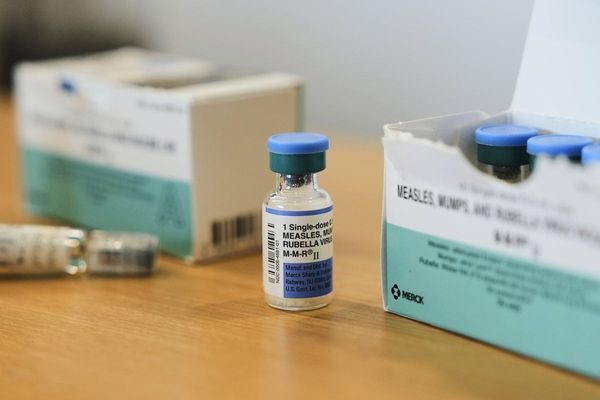Several measures indicate the U.S. economy may be near a recession. It has been seven years since the last official recession ended, which is an unusually long period of time between economic downturns.
And, the Federal Reserve has resumed monetary tightening, including raising interest rates. This could be a headwind for the prolonged rally in U.S. stock and bond markets. This has compelled many economists to believe the U.S. is overdue for a recession.
If a recession is in the offing, investors should reposition their portfolios, away from riskier growth stocks that would be vulnerable to an economic downturn. Instead, investors should put focus on high-quality dividend stocks.
The reason is because dividend stocks offer several layers of protection when stock markets decline. First, dividends are a source of real returns--the best companies keep pumping out their quarterly payments, in bear markets or bull markets.
And, high-quality businesses with competitive advantages are the types of companies that remain profitable, even during recessions. A consistent level of profitability means a company is continuing to build shareholder wealth.
Right now, the S&P 500 has an average dividend yield of 2%. The good news: it is not difficult to find blue-chip companies with dividend yields at or above the index average. Some premier dividend stocks have yields upward of 4%. While interest rates remain relatively low, these dividend yields are highly attractive.
This article will discuss the top 10 dividend stocks--in no particular order--that investors should buy to prepare for the next recession.
Recession Proof Stock #1: AT&T
While a recession would be devastating to many speculative stocks, investors can take solace in the fact that most consumers will still pay for their wireless cellular, TV and Internet service.
AT&T (T) is a Dividend Aristocrat, which are stocks in the S&P 500 with 25 or more years of dividend growth.
Click here for the full list of Dividend Aristocrats.
It has increased its dividend for 33 years in a row, and the company should have little trouble raising its dividend in the future.
AT&T's dividend represented approximately 70% of the company's free cash flow last year. This leaves plenty of room for continued dividend growth.
AT&T's revenue increased 12% in 2016, thanks in large part to the $49 billion acquisition of DirecTV.
The DirecTV purchase made AT&T the largest pay TV provider in the world. It resulted in a global giant, with more than 26 million customers in the U.S., and another 19 million customers in Latin America.
AT&T generated $16.9 billion of free cash flow for the year, up 7% from the previous year. Adjusted earnings per share rose 5% in 2016.
The company added 9.5 million wireless customers last year, including 6.2 million in the U.S. and 3.3 million in Mexico.
To produce growth up ahead, AT&T has its eyes on another megamerger. It has a pending agreement to buy Time Warner (TWX) for $109 billion.
Time Warner has many valuable cable and premium TV properties, including CNN and HBO. It also has a large movie studio. It has three out of the top five basic cable networks, and the No. 1 premium network.
Purchasing Time Warner would be a great diversification tool for AT&T. It would allow AT&T to expand into media. The combination would result in a giant company, with 133 million nationwide mobile and 25 million video subscribers.
AT&T has a 4.8% dividend yield, which is more than twice the average dividend yield of the S&P 500.
Recession Proof Stock #2: Johnson & Johnson
J&J (JNJ) has a very long history of dividend growth. It is one of only 19 Dividend Kings, a list of stocks that have 50 years of consecutive dividend growth under their belts.
To see the complete list of Dividend Kings, click here.
It has maintained such an impressive track record, because of its excellent brands. Some of its popular consumer brands include Johnson's, Neutrogena, Listerine and Tylenol. J&J has three large businesses--pharmaceuticals, medical devices and consumer health care products--that collectively generated $15 billion of free cash flow in 2016.
All three operating segments posted sales growth last year, after adjusting for the U.S. dollar. Operational sales growth was as follows:
- Pharmaceuticals: Up 7.4%
- Medical Devices: Up 0.9%
- Consumer Health: Up 1.5%
Total revenue grew 3.9% for the year, to $71.89 billion. Excluding all nonrecurring items, full-year sales growth was 7.4% worldwide, including 8.9% in the U.S., and 5.7% outside the U.S. Earnings-per-share rose 8.5% on an adjusted basis last year. On an operational basis, earnings-per-share increased 9.4%.
These are very strong growth rates, and were largely due to J&J's pharmaceutical segment, led by oncology and immunology. In oncology, multiple myeloma drug Darzalex reached more than $500 million in sales in its first full year on the market. Sales stand to grow much higher moving forward, since J&J recently received approval for two additional lines of the drug. Another strong performer last year was Imbruvica. Worldwide sales soared 84% in 2016, to $1.25 billion.
In immunology, sales of Stelara rose 31% last year, to $3.23 billion. J&J's future growth will be comprised of its strong pharmaceutical pipeline, and acquisitions. In 2017, J&J acquired Actelion for $30 billion. Actelion is an R&D company which focuses on treating pulmonary arterial hypertension.
Earnings are likely to grow at a mid-to-high single-digit rate going forward, which will be more than enough growth to continue increasing the dividend each year.
Recession Proof Stock #3: Coca-Cola Co.
Coca-Cola (KO) is a global beverage behemoth. It owns or licenses more than 500 brands, which are sold in more than 200 countries worldwide. Its portfolio includes 20 individual brands that bring in at least $1 billion in sales each year.
And yet, Coca-Cola is struggling. The reason is because Americans are drinking less soda. In 2015, soda consumption fell to a 30-year low in the U.S. The decline in soda consumption has caused Coca-Cola's financial performance to stagnate.
Sales have fallen every year for the past five years. In 2012, Coca-Cola generated total revenue and net income of $48.02 billion and $9.02 billion, respectively. Last year, sales and net income fell again, to $41.86 billion and $6.53 billion. Earnings-per-share declined 24% from 2012 to 2016.
In response to the changing beverage landscape, Coca-Cola has branched out into still beverages, such as water, juices and teas. It has a large portfolio of popular brands in these areas, including Dasani, Minute Maid, Simply Orange, Honest Tea, Odwalla and more. These products are performing well--still-beverage volume rose 3% for the year.
The problem Coca-Cola is having with this strategy is that its flagship soft drinks such as Coca-Cola, Diet Coke and Sprite continue to make up the majority of the company's profits. Sparkling beverages--ready-to-drink carbonated beverages--represented 72% of the company's worldwide case volumes last year, down just one point from the previous year.
Coca-Cola still has two major advantages: pricing power and international growth. The company's price/product mix shift boosted revenue by 6% last year. And, organic revenue rose 12% in Latin America, and 3% in Europe, the Middle East and Africa.
A world-class distribution system and pricing power allows Coca-Cola to generate huge free cash flow, even though sales are declining. Last year, Coca-Cola had free cash flow of $6.53 billion. This more than covers its dividend. In 2016, the company returned $6 billion in dividends.
Coca-Cola has increased its dividend for 55 years in a row, including a recent 6% increase. The new annualized dividend rate of $1.48 per share provides a 3.4% dividend yield.
Recession Proof Stock #4: PepsiCo
PepsiCo (PEP) is very much like Coca-Cola, in that it is a huge soda company. However, PepsiCo offers the added bonus of diversification. In addition to its beverage business-which includes sparkling and non-sparkling beverages like Pepsi, Mountain Dew, and Gatorade-PepsiCo has a large food business.
PepsiCo operates Frito-Lay snacks, as well as Quaker. It also has healthier snack brands such as Sabra hummus and Naked juices. Sabra generates roughly $800 million in annual sales, while PepsiCo management expects Naked to be its next brand to reach $1 billion in annual sales.
PepsiCo's sales are divided almost equally between food and beverages. Its diversification is highly valuable, given the declines of soda consumption in the U.S. Thanks largely to its food business, PepsiCo's currency-neutral revenue rose 4% last year.
Cost cuts helped drive 9% earnings growth in 2016. Earnings per share, adjusted for non-recurring items, increased 15% in the fourth quarter.
PepsiCo generated $7.4 billion of free cash flow last year. The company's adjusted return on invested capital was 21.5% last year, which is well above its cost of capital. Such strong cash generation allows the company to return lots of cash to shareholders.
PepsiCo is a very strong dividend growth stock. It has hiked its dividend for 45 years in a row, including a recent 7% increase for 2017. The company expects to return $6.5 billion to shareholders in 2017, made up of $4.5 billion of dividends, and $2 billion of share repurchases.
PepsiCo expects to generate another $7 billion of free cash flow in 2017. Earnings, adjusted for currency fluctuations and one-time expenses, are projected to rise 8% this year.
The company is being negatively impacted in the short-term by the strong U.S. dollar. But, its international exposure is a long-term catalyst. PepsiCo's growth will be fueled by international markets, particularly under-developed economies. Last year, the company grew organic revenue by 9% in Latin America, and 5% in Asia, the Middle East, and North Africa.
For a head-to-head matchup of Coca-Cola versus PepsiCo, click here.
Recession Proof Stock #5: Hormel Foods
Hormel (HRL) is a diversified food company. Its refrigerated foods business represents nearly half of its profit. Some of Hormel's core brands are Jennie-O, Spam, Dinty Moore and Skippy. Hormel is adept at making accretive acquisitions. It seeks high-quality brands with leadership positions in their respective categories, that it can leverage with its distribution capabilities.
This provides for significant cost synergies, which results in sales and earnings growth. For example, last year, Hormel increased sales by 3%, and earnings-per-share by 29%. The strong results continued in the first quarter of 2017, when Hormel produced a record for earnings-per-share. Revenue increased another 3%, along with 2% earnings growth year over year.
Hormel's major acquisitions in the past few years, have revolved around the strategic desire to enter new product markets. Specifically, Hormel is ramping up its exposure to natural foods and organics. Its recent deals include:
- 2016 acquisition of Justin's, maker of natural nut-butter products.
- 2015 acquisition of Applegate Farms, maker of natural and organic meats
- 2014 acquisition of CytoSport, nutritional products company
Those acquisitions helped diversify its brand portfolio. Hormel's overall results are being negatively affected by falling poultry prices, which is a headwind for its large Jennie-O segment. But, this is likely to be a short-term fluctuation.







